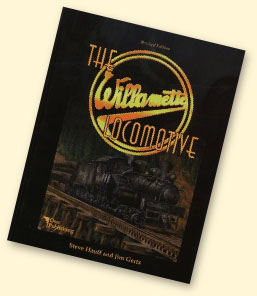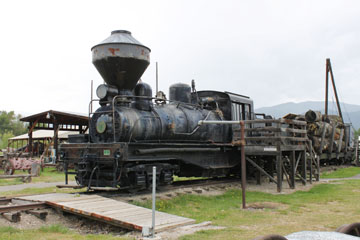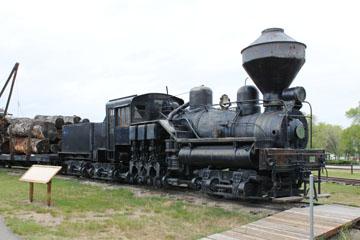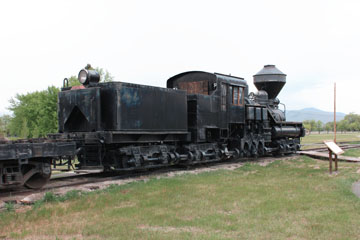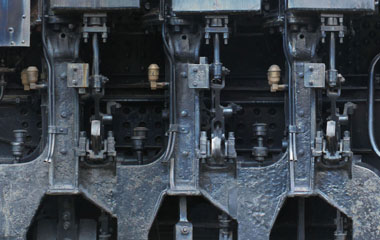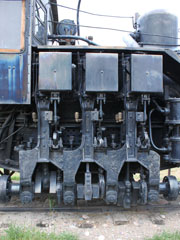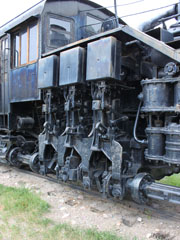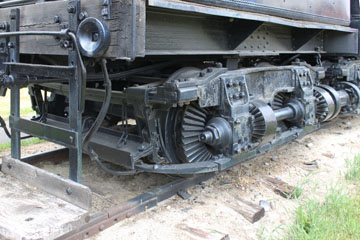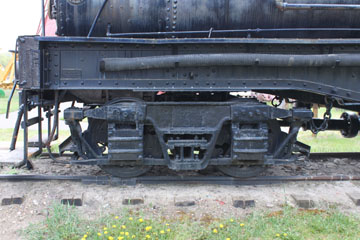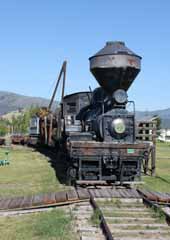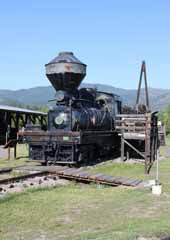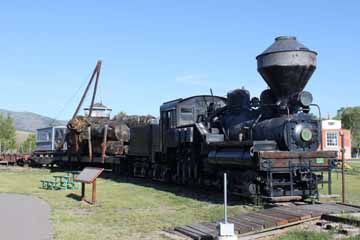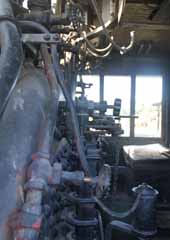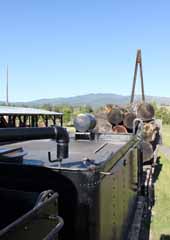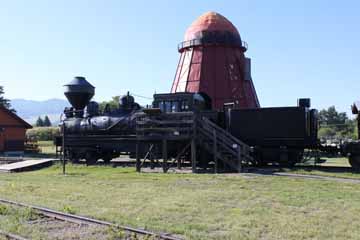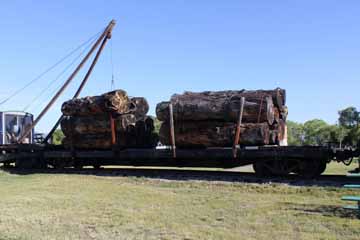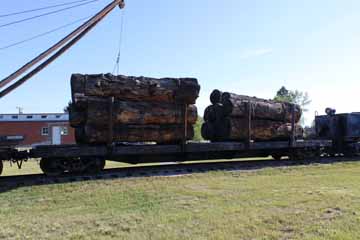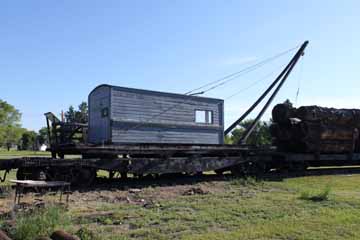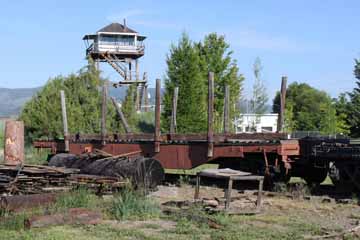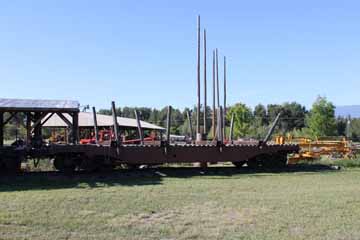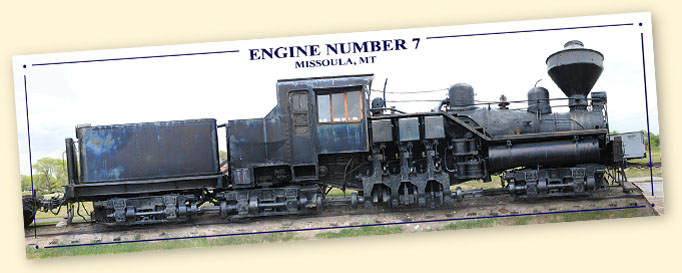

This geared locomotive was built by the Willamette Iron and Steel Works in Portland, OR, in 1923. It is the seventh built and oldest survivor of thirty-three outshopped by the company between 1922 and 1929, known as “Willamettes”.
Willamette Iron Works was established in 1865 specialising in the manufacture of steamboat boilers and engines. In 1904, the company changed its name to the Willamette Iron and Steel Works and continued to operate until 1990. During WWI, it built a number of small freighters, but its main focus was on the logging industry, producing log loaders, skidders, lumber carriers and logging engines. Between 1901 and 1931, the company built over two thousand five hundred logging engines (also known as yarders, donkeys or loaders), used to drag logs from where they had been felled to landings to be shipped out by rail, river or other means. During the 1920s, seven out of ten logging engines sold in Washington, Oregon, California and British Columbia were Willamette built. They were mainly wood fired “steam donkeys”, steam-powered winches with upright boilers, but the company also built electrically powered models from 1911.
Production of the Willamette's first geared locomotive in 1922 resulted from local demand and continuing company diversification after WWI. It was expensive for west coast companies to ship their locomotives to the original eastern manufacturers for repair, and the Willamette Iron and Steel Works was a logical, less costly alternative. As a result, by the 1920s, it had already provided repairs to locomotives built by other manufacturers such as Lima, Climax and Heisler for several decades. The experience showed that building its own locomotives was entirely possible, and that it could probably even improve on existing designs. Expiry of the patent on the Shay locomotive a few years earlier then allowed the company to base its design on a type of locomotive already familiar to loggers, but with a number of changes that are detailed later on this page.
I've visited Fort Missoula a couple of times and the photos on this page are from both visits.

#7 is a standard three truck Willamette measuring
50’ 4” over the footboards. It has an enclosed steel cab, weighs 150,000 lbs light and 195,000 lbs fully loaded. Operating at a boiler pressure of 200 psi, it delivered 30,150 lbs tractive effort.
It is the only coal burning Willamette produced. The fuel bunker was originally fitted with wooden sideboards providing a 5 ton coal and 3,000 gallon water capacity. Below, the bunker is mounted on steel I beams and hinged to the frame. Steel castings form the front end of the bunker and the rear of the engine frame.
The Willamette used a fish belly girder frame under the engine. Lima had already used girder frames on some of its Shays. Above, like them, the Willamette provided a series of holes in the frame to allow access to the lower firebox stay bolts.
The girder frame eliminated much of the give experienced by I frames and the consequent problems with truss rods and joints. Cast steel supports were riveted to the lower side of the frame to support the boiler. Cast steel filler blocks between the side of the firebox and frame then held the boiler central in the frame.
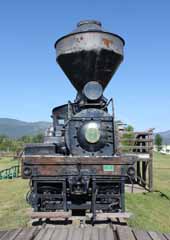
Willamettes were fitted with different types of spark arresting stacks. #7 has a Radley-Hunter. This has a set of internal baffles that cause the exhaust to circulate inside the stack. Live sparks are thrown against the inner casing, extinguished and then fall into the outer casing, which has to be emptied periodically.
They were offered with a choice of end beams. #7 has a wood end beam, made of oak and backed by a steel channel. The cast steel end beam is fixed to the frame. Those who favoured the wood end beam claimed the steel beam caused more shock when coupling.
The Walschaert valve gear allowed the valve chests to be moved to the outside, reducing access problems found on Shays.
Unlike the Shay, all three cylinders on the Willamette faced forward of the cab, which also reduced manufacturing costs.
Unlike the Shay, which used Stephenson, the Willamette used Walschaert valve gear.
This simplified the gear, reduced the number of wear points and allowed a shorter crankshaft carrier. It also retained its timing much better, reducing the need for regular resetting.
The 12” x 13” cylinders have brackets bolting them to the boiler.
The casting that carried the crosshead guides and supported the crankshaft was designed by Albert Claypoole, an engineer at Willamette. It was the only patented innovation introduced on the locomotive.
Below, the left hand side of the front truck. Each
of the three trucks has a 4’ 4” wheeelbase, with a total engine wheelbase of 40’ 2”. Bottom photo,
the right hand side of the front truck. A cross-equaliser was fitted on the front truck to
counteract motion caused by movement of water in the boiler.
The universal joints were an area of constant wear and the Willamette was designed to make repair of these as easy as possible. For example, the bushings could be replaced without dismantling the coupling ring.
The trucks are similar to the Shay locomotives. The pedestal and truck boxes are bolted to one-piece cast steel frames with bevel gears on the line shaft and 36” diameter wheels. However, they had a unique, three point springing system with the springs inclined to the central bolster, which reduced swaying on rough road beds.
Below, the universal joints on the middle and rear trucks are joined together with a sleeve that slid back and forth to compensate for variation in the length of the line shaft as the locomotive passed through curves.
The Willamette locomotive debuted at a time when the geared logging locomotive was nearing its end. In 1928, the last Climax was outshopped and Heisler’s and Lima’s production totals were on a downward slide.
Whether Willamette anticipated this decline is not clear. However, it is clear that locomotive production was just one aspect of a diverse business, and the company geared up to build only a small number. Overheads were kept to a minimum and the erection shop was also occupied by other production processes.
The locomotive was bought by the Western Lumber Company and worked as #3 hauling lumber on the Big Blackfoot Railway between Bonner’s Landing, MT, and the Clearwater River. Some time later, it was renumbered #7.
Retired in 1947, it was restored in 1954 for the Republic Studio film Timberjack. It then went on display at a park in Bonner until donated by the Champion International Corporation to the Historical Museum at Fort Missoula in 1987. In January 1989, it was moved the twelve miles to its current location at the museum.
Still, the thirty-three “Willies” produced by the company left a lasting legacy on the design of the geared locomotive.
During the 1920s, Lima produced the first of its “Pacific Coast” Shays, with many of the advancements made by Willamette (you can see one of these, Vancouver Wharves #2, on the Cass Scenic Rail Road page of this website). Heisler also produced what it termed the “West Coast Special”, an enhanced version of its previous design, and Climax beefed up its line for the last years of production.
Related Links:
Geared Steam page on the Willamette Locomotive
Send a comment or query, or request permission to re-use an image.
A revised edition of Steve Hauff and Jim Gertz's The Willamette Locomotive was published by Oso Publishing in 1997. It has a wealth of information and lots of photographs of these historic locomotives (click on the cover to search for this book on bookfinder.com).
